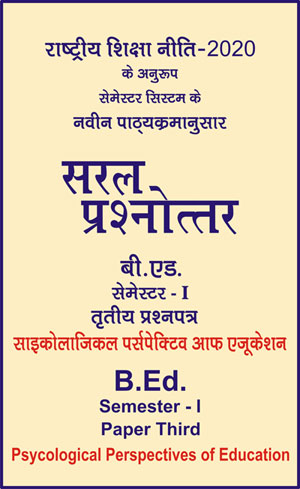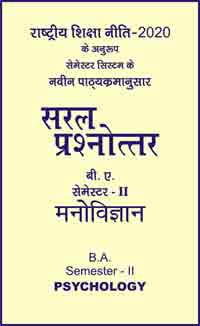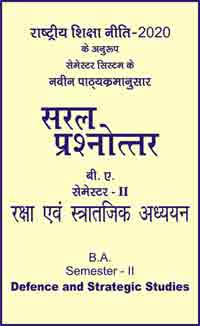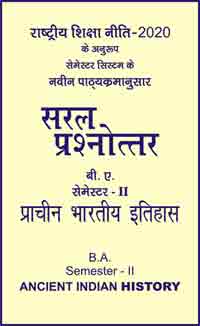|
बी एड - एम एड >> बी.एड. सेमेस्टर-1 प्रश्नपत्र-III - साइकोलाजिकल पर्सपेक्टिव आफ एजूकेशन बी.एड. सेमेस्टर-1 प्रश्नपत्र-III - साइकोलाजिकल पर्सपेक्टिव आफ एजूकेशनसरल प्रश्नोत्तर समूह
|
5 पाठक हैं |
|||||||
बी.एड. सेमेस्टर-1 प्रश्नपत्र-III - साइकोलाजिकल पर्सपेक्टिव आफ एजूकेशन (अंग्रेजी भाषा में)
Question- Explain Pavlov’s classical conditioning theory of learning and classify its utility in education.
Or
Describe ‘Learning theory’ propounded by ‘I.P. Pavlov’. Explain its contribution to education.
Answer-
Pavlov’s Classical Conditioning
Experiments by Pavlov : Many experiments have been made on animals in connection with conditioned response learning. First experiment was made by a famous Russian Physiologist Pavlov on dog around 1900. Pavlov made an opening in the dog’s cheeks by operation so that drops of saliva from the salivary glands were collected in a test tube and the amount of saliva could be measured.
In this arrangement, food is delivered to the dog through the window. A bell rings simultaneously or just before the food, saliva begins to come out from the dog’s mouth on the ringing of the bell. Saliva from the dog’s mouth is collected in a calibrated glass tube. This activates a recording mechanism through a lever and the experiment is able to know the number of drops of saliva fallen and whether the salivation was regular or not.
Factors of Conditioning : What are the factors which are responsible for conditioning ? Which elements are essential for its establishment ? Factors controlling conditioning are given below in brief :
(1) Effect of Motives : For conditioning the stimulus must have the capacity to produce the response. In Pavlov’s experiments, the dog was hungry. Therefore, it associated the bell with the food, not food with the bell. Thus, the motive has an influence on the learning of conditioned response.
(2) The time relations of the Stimuli : The time relations of the two stimuli are very important in conditioned response learning. It is essential that the new stimulus (cs) is given before the response ends. The natural order is that first new stimulus (cs) is given and then the old stimulus (ucs). In Pavlov’s experiments the bell is rung before the food and food is given before the response to the bell ends.
(3) Repetition of the Stimuli : Food is given to the dog after the bell for many such relations. If the dog gets the food always with the bell then it begins to salivate to the ringing of the bell only. But once the response is conditioned, the two stimuli need not be repeated together continuously. In Watson’s experiment when fear with a hare is developed in the child, producing a loud sound suddenly in the presence of hare once a while, it was enough for the child to remain afraid of the hare.
(4) Absence of the Distracting Stimuli : Conditioning becomes difficult if some other stimulus is present with the two stimuli (cs and ucs). The lesser the distracting external stimuli are, quicker is the earning of conditioned response. In Pavlov’s experiment, a sound-proof room was used for this purpose.
Application of Conditioning : In general, the conditioning becomes easier, the higher the species of the organism is. Thus, learning by this method should become easier in the case of human beings. But man is so complex an organism that stimuli, which distract him and interfere in his learning, are numerous. In spite of this, conditioning has a great importance in the learning of a child. Many of our responses are conditioned to particular things in childhood and these remain fixed even in the adulthood. For example, if a person of a particular appearance treated you badly in your childhood, you hate or fear response for that figure becomes conditioned and this response remains so in your adulthood for the persons of similar appearance. Conditioning technique is also used in the teaching of word-meaning to children. The word ‘Mama’ is spoken to the child while pointing to ‘Mama’. The child associates the sound ‘Mama’ with the figure of ‘Mama’ and begins to call her Mama. If the child cannot distinguish between different females in the family, he calls ‘Mama’ to all persons of that figure. But when he is similarly told about other females, he learns to distinguish between them. Thus, whereas we acquire different responses to things, animals or human beings through conditioning, we also acquire the meaning of words through this process.
Pavlov wanted to prove that all learning is conditioning. Modern psychology does not accept this view. But no psychologist can deny the fact that conditioned response is a very important technique used in teaching many things to pet animals. For example if a bear is to be taught dancing to the sound of the drum, it is made to stand on a hot plate and the drum is sounded as the animal lifts its feet. After some time it begins to lift its feet at the sound of the drum only. Many examples of the application of this method can be given in daily life. At the time when the husband normally returns home, the wife expects her husband coming at each sound of the bell on the road. Your hand always goes to the right pocket for the purse though it is in the left pocket, because the purse has been taken out from the right pocket so many times that the activities of taking out purse and putting hand in the right pocket are associated with each other.
Another form of conditioning is negative adaptation, meaning learning not to make a response. This is in fact, a form of conditioning. It is very useful in the change of habits. In negative adaptation, a particular response is inhibited when a second response takes place. For example, if an adult male rat is given electric shock as it reaches the female rats, it will gradually learn to turn away from the female rats. If a drug is mixed in the drink of alcoholics so that they begin to vomit, they will tend to avoid the alcohol.
|
|||||














